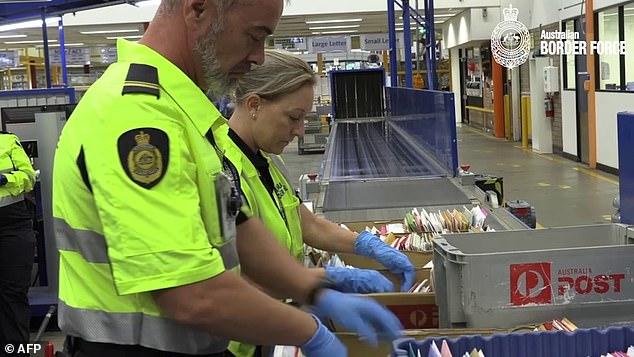
Around the globe, transnational serious and organised crime groups’ traditional business models are being disrupted by the Covid-19 pandemic. Most of these groups are in uncharted waters.
Gareth Rice’s recent Strategist post, ‘Narcos in the time of Covid-19’, captures the diversity of criminals’ responses to Covid-19.
Organised crime structures and business models tend to be amorphous, which makes drawing general conclusions that encompass all groups—from Juárez to Hong Kong, and from London to Mombasa— inherently difficult.
Because of their very different structures, criminal groups’ responses to the pandemic have varied significantly. Among them will be winners and losers.
Rice’s assessment that ‘new restrictions on movement across international borders will test even the most resilient trafficking networks’, holds true for most groups, but not all. The global trade in synthetic illicit drugs illustrates this point.
For much of the past decade, Mexican cartels were the dominant organised crime groups in central and north America, especially for manufacturing, trafficking and selling illicit drugs. Those groups have regularly adapted to meet consumer demand and now dominate the market for a variety of drugs, including cocaine to fentanyl.
They have expanded their operations across the globe and integrated their supply chains with those of other groups.
The Mexican cartels’ domination of supply chains is likely to be substantially disrupted during the pandemic. Their access to cocaine from Central America and synthetic drug precursors from China will be severely constrained. While they will still have ample sources for black tar heroin and marijuana, their access to Northern American markets is problematic and will be increasingly constricted by reduced trade and people flows across the US border.
Without products to sell or access to markets, the cartels will be unable to maintain their international relationships.
Rice argues that to the keep money flowing in, ‘drug cartels may simply leverage their expertise in human trafficking and extortion’. But Mexico’s cartels would still face reduced access to markets in addition to a fall in demand. The demand for trafficked humans, in terms of indentured labour or modern slavery, in North America will likely be low for some time to come. And cartels attempting to move into human trafficking would face the same supply-chain problems as they do for illicit drugs. It’s unlikely that the increased use of violence by cartels will resolve either challenge.
The production and distribution of illicit drugs and their precursors in China have been constrained by national lockdowns. The Mexican cartels’ adoption of 21st-century ‘just in time’ global supply chains, and supply-chain integration with Chinese organised crime groups, have left them with diminishing access to the materials needed to manufacture drugs for their global markets.
But, while these shortages, along with recent seizures, may lead to a short-term reduction in drug supplies, that effect will be offset by groups in the special zones that work under a different business model.
In contrast with Mexican cartels, risk-averse organised crime groups operating in the Mekong region have maintained their stockpiling habits.
Authorities in the Mekong estimate that those groups’ precursor stockpiles could support industrial-level methamphetamine production for a further four to six months.
Over the next few months, the Mekong region’s organised crime groups are likely to cement their status as a global methamphetamine source. Their deep connections with the Chinese chemical and pharmaceutical industry and international markets will see them well placed to emerge from the pandemic as a dominant global organised crime force. In addition to dominating the global manufacture and supply of methamphetamine, these groups are likely to adapt and begin producing other synthetic drugs, such as fentanyl.
Law enforcement agencies should use this time to identify and disrupt the criminal groups that are likely to emerge from the pandemic as winners. At the very least, they should target groups producing and distributing fake and contraband medicines and medical supplies.
Until now, illicit-drug distribution in Australia has been unstructured and multilayered, with products moving from international wholesalers to importers and then through various domestic wholesale levels until they’re sold to consumers.
Covid-19 may generate the conditions for revolutionary changes to illicit-drug supply chains. In Bangkok, the sale of illicit drugs has moved off the streets because of Covid-19. Increasingly, drugs are ordered online and delivered by motorbike.
In Australia, the pandemic is likely to result in more direct links between international suppliers and domestic consumers. While ordering drugs over the internet isn’t new, the take-up has been low. The pandemic and the promise of contactless purchases are likely to result in greater engagement with a new online supply system.
That could produce substantial declines in bulk drug importations. Australia’s mail and parcel systems could soon be bombarded with an increasing number of micro-imports of illicit drugs.
Under current law enforcement models, small imports are unlikely to be investigated. Even if those cases are pursued, the result is likely to be a warning for the drug user whose package is intercepted or a fine. The international supplier might even offer a replacement given the small quantities involved.
Australia’s law enforcement model is focused on intercepting major imports on the assumption that large seizures are more likely to disrupt drug supplies and criminal groups. A change to targeting bulk micro-importations would demand all-new investigation methods, disruption strategies and case categorisation and prioritisation models.
Anticipating this development, the government should consider investing now to enhance the screening of cargo and parcels arriving in sea and by air.